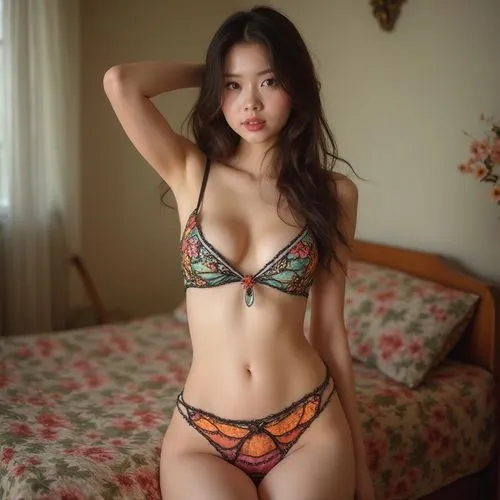In contemporary Tokyo, nightlife unfolds across **three spatial patterns**: ① multi-floor dance clubs with central dance floors and VIP lounges (Shibuya, Roppongi), ② lane-like “yokocho” of micro-bars and grills (Shinjuku), and ③ concept lounges and shisha cafés with seated service (Aoyama, Ginza). Services are standardized: nightclubs charge entry + drink ticket; alley bars run table or seat charges; shisha lounges charge per set with time limits. Users are a mix of 20s–50s locals, visitors, and expats; weeknights skew short and efficient, weekends run late. Culturally, these nights are part of the city’s **institutionalized intimacy**—a staged choreography of proximity that remains mindful of rules (age checks, anti-touting ordinances, smoking zones). This article treats nightlife in tokyo as urban culture first, giving you the “why/how” behind venues, access, and etiquette.
1. Where should you start in nightlife in Tokyo?
2. Which areas are best and how do you access them?
3. What do prices, time limits, and eligibility look like?
4. What venue types exist and what services do they offer?
5. How do reservations work and what etiquette/phrases help?
1. Where should you start in nightlife in Tokyo?

1-1 Area overview
Shibuya is the easy first step for visitors because key clubs sit within a 5–10 min walk of the station. Check the official pages for schedules and prices: WOMB (official) and CLUB CAMELOT (official). Aoyama offers a tighter audiophile scene—VENT (official)—with a curated techno/house program. Shinjuku leans alley-bar and micro-pub: Golden Gai (official) and Omoide Yokocho (official).
1-2 Venue distribution
Shibuya’s club core (Dogenzaka–Udagawacho) clusters multi-floor venues; Aoyama concentrates on mid-size two-room spaces; Kabukicho in Shinjuku concentrates hundreds of tiny counters along pedestrian lanes. This density allows **venue-hopping on foot** within 3–12 minutes per hop—use official “Access” pages above to map your night.
1-3 Typical session flow
Nightclubs: queue → ID check (passport/driver’s license) → entry fee with/without drink ticket → cloakroom → main floor/VIP. Alley bars: wait for a seat sign; expect a seat charge and quick turnover. Shisha lounges: order a shisha set per person; time caps are common (60–120 min). Many venues post rules, fees, and hours on their official sites—see WOMB, CAMELOT, VENT, Golden Gai, and Omoide Yokocho links above.
For city-level orientation and current campaigns, see Tokyo’s official guide: GO TOKYO Nightlife (official).
2. Which areas are best and how do you access them?

2-1 Getting in and out (last trains)
Conclusion: plan your exit first. Last departures on Metro and JR vary by line and day; expect the last wave around 23:30–00:40. Confirm exact times on the official planners: Tokyo Metro and JR East timetables.
2-2 Top zones and walking radii
Shibuya: WOMB and CAMELOT sit uphill toward Dogenzaka; both publish access maps (see WOMB official and CAMELOT official). Aoyama/Omotesando: VENT is near Omotesando Crossing (VENT official). Shinjuku: Golden Gai and Omoide Yokocho provide area maps and tips (Golden Gai official, Omoide Yokocho official). Kabukicho publishes neighborhood advisories and events via its official portal (Kabukicho official).
2-3 Table 2: Access & Hours
Use official links to confirm last-minute changes. Walk times are typical from the nearest JR/Metro exit.
Table 2: Access & Hours
| Station | Walk Time | Hours (typical) | Area (JP Link) |
|---|---|---|---|
| Shibuya | 5–10 min (WOMB/CAMELOT) | Fri–Sat late; confirm per event | WOMB (official) / CAMELOT (official) |
| Omotesando | 6–8 min (VENT) | Fri–Sat late; curated weeknights | VENT (official) |
| Shinjuku | 5–12 min (Golden Gai / Omoide) | Bars vary; earlier weeknights | Golden Gai (official) / Omoide Yokocho (official) |
Conclusion → numbers → source: Last trains around 23:30–00:40 (check Tokyo Metro / JR East). Walk times are typical from station exits; confirm venue maps via each official page.
3. What do prices, time limits, and eligibility look like?

3-1 Price checkpoints (with official references)
Conclusion first: a typical weekend club night in Shibuya costs about ¥3,000–¥4,000 plus drinks. Verify on each venue’s listing: WOMB and CAMELOT publish event pages with ticket prices. Aoyama’s VENT lists each event’s door price. Shisha lounges commonly post set prices; for example, the Tokyo branches of “muse” show fees and age checks on their official site (muse shisha (official)).
3-2 Eligibility and ID rules
Conclusion: bring a passport or government photo ID; staff will refuse entry without it. Tokyo’s youth ordinance defines minors as under 18 and frames the protection regime (Tokyo Youth Ordinance – TMG official). Police and wards also publicize enforcement and notices on related ordinances (Metropolitan Police – laws/ordinances; Shinjuku anti-touting ordinance). Expect smoking-control rules indoors unless a designated room is posted (Tokyo passive smoking countermeasures).
3-3 Table 1: Venue Types & Base Fees
Table 1: Venue Types & Base Fees
| Venue Type | Typical Fee | Session Time | Area (JP Link) |
|---|---|---|---|
| Dance club (major event) | ¥3,000–¥4,500 door | All night / last train aware | WOMB, CAMELOT |
| Audiophile club (Aoyama) | ¥2,500–¥4,000 event-based | 3–6 hours | VENT |
| Golden Gai micro-bar | Drink + seat charge ¥300–¥800 | 45–90 minutes | Golden Gai (official) |
| Shibuya/Shinjuku alley (yokocho) | Skewers/beer sets ¥1,000–¥2,000 | Short hops, multiple stops | Omoide Yokocho (official) |
| Shisha lounge | ¥2,000–¥3,000 per set | 60–120 minutes | muse (official) |
Conclusion → numbers → source: Fees vary by event; verify on each official website linked above.
4. What venue types exist and what services do they offer?

4-1 Clubs: sound, floors, and VIP
WOMB and CAMELOT exemplify Shibuya’s design: elevated booths, central dance floor, fog/lighting rigs, and optional VIP service. Both publish event calendars and access maps (WOMB; CAMELOT). VENT emphasizes sound architecture and room acoustics and documents its system in detail on its official site (VENT).
4-2 Alley bars: micro-spaces and turnover
Golden Gai is a six-alley matrix of tiny themed bars (often 6–10 seats)—the official association site provides neighborhood context and updates (Golden Gai official). Omoide Yokocho’s official site notes about ~80 shops around the west gate of Shinjuku Station and regular updates (Omoide Yokocho official).
4-3 Table 3: Reservation & Eligibility
Table 3: Reservation & Eligibility
| Method | Lead Time | Eligibility | Official (JP Link) |
|---|---|---|---|
| Club advance ticket / door | 1–7 days before weekends | Age 20+ with ID | WOMB / CAMELOT |
| Shisha lounge seat booking | Same day–3 days | Age 20+ (age check) | muse shisha (official) |
| Neighborhood rules & safety | Check day-of | No touting; follow ward rules | Shinjuku anti-touting ordinance |
| Legal baseline (youth/smoking) | Always active | Youth protection; smoking zones | TMG youth ordinance / TMG smoking policy |
Conclusion → numbers → source: book days ahead for weekends; age rules and neighborhood ordinances are enforced—see linked official pages.
5. How do reservations work and what etiquette/phrases help?

5-1 Booking moves that save the night
- For headline DJs, buy advance tickets on the club’s official page: WOMB, CAMELOT, VENT.
- For shisha lounges, message or call the branch listed on the official site: muse (official).
- Check last trains via Tokyo Metro and JR East timetables.
5-2 Etiquette in organized night spaces
Queue single-file; no drinks from outside; ask before photo/video in intimate bars; respect smoking signage (Tokyo ordinance). Most spaces are cashless-friendly, but carry backup cash for small bars. Avoid street solicitations per ward rules (see Shinjuku ordinance).
5-3 Useful phrases (plain & effective)
- “Ticket wa arimasu ka?” (Do you have tickets?)
- “Nijikai wa koko de ii desu ka?” (Is this good for a second round?)
- “Nomimono no saigo no chūmon desu ka?” (Is this last call?)
- “Tabako/Heated tobacco wa doko desu ka?” (Where is the smoking area?)
- “Mise no rūru o oshiete kudasai.” (Please tell me the house rules.)
6. Summary and Next Steps
As you plan, keep these official hubs open in your tabs: GO TOKYO nightlife, Tokyo Metro, JR East timetables, Golden Gai, Omoide Yokocho, and your chosen clubs: WOMB, CAMELOT, VENT.
SoapEmpire recommendation (for travelers & expats): If you are new to nightlife in tokyo, the hardest part is not choosing the “best” club—it is coordinating the moving parts: last-minute ticketing, group size changes, ID checks, last trains, and the subtle difference between club floors, micro-bars, and shisha lounges. Many travelers land at Shibuya Crossing and then spend forty minutes cross-checking English blogs against Japanese event pages. Meanwhile, the queue grows, a headliner time shifts by thirty minutes, and the friend who swore to arrive “before midnight” is still stuck on the Yamanote Line.
SoapEmpire solves that friction with a plain-English concierge that cuts out guesswork. We cross-verify official Japanese pages (WOMB, CAMELOT, VENT) and ward/tourism notices (Golden Gai, Omoide Yokocho, GO TOKYO) in real time, then translate them into simple, actionable steps: which entrance, what fee tier tonight, whether a re-entry stamp exists, and when the last JR/Metro connection still works. If your group prefers a seated warm-up or wind-down—say, a shisha hour—we map capacity and time caps using official venues like muse shisha. Our approach respects Tokyo’s “organized intimacy”: efficient queues, clear house rules, and ordinances on touting and smoking. You get the fun without the uncertainty.
What you gain: less line time, fewer miscommunications at the door, and higher odds that everyone in your group has the same expectations about cost, noise level, and closing times. It also means fewer taxi surprises after 1 a.m. and a smoother sequence from alley bar to main floor to late snack. Whether your preference leans toward sub_keywords like boutique rooms, alley explorations, or mellow lounges, SoapEmpire builds a route that matches budget and stamina while keeping the paperwork (and the Japanese) light.
Ready to lock plans? For reservations or inquiries, please contact us via the inquiry form. We’ll confirm availability, translate your requests into Japanese for staff, and send you a clean itinerary with fees, walk times, and last-train checkpoints—so your night reads like a well-paced set, not a scramble.
Related SoapEmpire guides: Tokyo Red-Light District Basics / Osaka Nightlife & Soapland Guide / How to Book in Japan (Plain English) / official portal: SoapEmpire
If you’re interested in visiting any of these places, SoapEmpire offers a 24-hour booking support service for only $10.
Just send the store name, preferred time, and your name (nickname is fine) to:
artistatakuma@icloud.com.
We’ll take care of your reservation quickly and smoothly.
FAQ
- How much should I budget for a club night?
- Plan for ¥5,000–¥8,000 including entry and two drinks. Check the event’s official page for exact pricing (WOMB, CAMELOT, VENT).
- What’s the best time to go?
- For clubs, arrive by 23:00 to clear lines and catch openers; for alley bars, start around 19:00–20:00 before seats fill.
- Do I need reservations?
- Buy advance tickets for big weekends and book shisha lounges for groups. Many bars are walk-in but small; consider early starts. Use official booking buttons or our contact form.
- Is street touting legal?
- No—wards like Shinjuku prohibit touting in public spaces; follow posted advisories (ward ordinance).
- What ID do I need?
- Bring a passport or government photo ID; staff enforce age checks. See Tokyo’s youth protection framework (TMG official).

